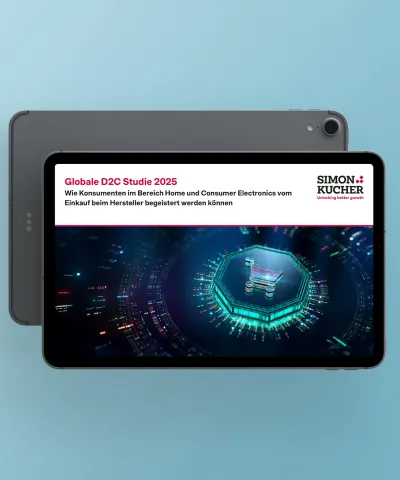The EU’s carbon pricing regime is already affecting companies far beyond its borders. Through the Carbon Border Adjustment Mechanism (CBAM), costs tied to embedded emissions are beginning to surface in procurement terms, supplier requirements, and trade contracts even before enforcement begins. For firms that export into the EU or compete with EU-based manufacturers, this is no longer a policy to monitor, but a cost variable to plan for.
In this final part of the series, we focus on what EU carbon pricing means for companies outside Europe, especially those that export to the EU or sit in complex global value chains. We highlight the sectors likely to face direct CBAM obligations as soon as 2026 and outline the steps they need to take now to prepare. We also look at how pressure is building on finished goods manufacturers through customer requirements and procurement practices, even in the absence of formal regulation. For firms in both camps, exposure is coming, and readiness cannot wait.
EU ETS is already impacting global firms via CBAM, and plans to expand are in place
CBAM is already reshaping global industry. Since its inception in 2023, CBAM requires EU importers of carbon-intensive goods (including iron and steel, aluminium, cement, fertilizers, and hydrogen) to report embedded emissions. By 2026, full enforcement begins: importers will need to purchase CBAM certificates priced in line with EU carbon allowances, effectively extending the EU ETS to foreign producers. With over €100 billion in annual imports across these sectors, CBAM will raise costs, increase tracking and reporting burdens, and pressure firms exporting to EU to decarbonize.
And, this is just the start. By 2026, the mechanism is expected to expand to chemicals, plastics, glass, and potentially embedded emissions in finished goods like vehicles and machinery. See the below timeline for inclusions and rationale for inclusion.
CBAM affected industries in…
2023 - 2025 | Proposed for post –’26 inclusion | Longer term ambitions, not formally proposed |
Sectors selected due to high carbon intensity and existing ETS coverage within the EU |
Follow similar logic as materials already included for ’23-’25, natural logical extension |
Long-term, policy makers aim to move from raw goods to finished goods that contain CBAM covered materials. These types of goods could be targeted by 2030+, depending on current CBAM implementation. |
While the timeline for CBAM to cover finished goods is not formally proposed, regulators have made their position clear. The CBAM Review Clause gives the European commission legal authority to assess CBAM extension, and EU officials publicly state intent to expand to finished goods. Upstream suppliers, OEMs, and even companies with no physical footprint in Europe may be pulled in through customer requirements or value chain exposure. As a result, CBAM is evolving beyond a carbon tariff into a global compliance regime for any firm engaged in carbon-intensive trade.
What companies affected by potential 2026 EU ETS inclusion should do now
For sectors expected to enter CBAM’s scope in 2026, the window for preparation is closing fast. While these materials are not yet covered by financial enforcement, the European Commission has signaled they are under review for near-term inclusion. For manufacturers and exporters in chemicals, plastics, and glass, especially those selling into the EU, this is the moment to move from watchful waiting to operational readiness.
Step 1: Get control of emissions data. CBAM compliance depends on embedded emissions reporting, which means companies must begin quantifying scope 1 and 2 emissions at the product level. Many firms in these sectors lack product-level lifecycle emissions tracking today. That gap needs to close. Set up systems to capture process emissions, material inputs, and energy usage in line with CBAM’s methodology requirements, and consider running dry runs of embedded carbon calculations on key SKUs.
Step 2: Assess cost exposure if CBAM certificate payments begin in 2026. Build a shadow pricing model to estimate how a €70–€160 carbon price would affect landed costs in EU markets. Use that to pressure-test margins and inform customer pricing conversations now before carbon costs become real line items. Firms who can engage their customers sooner rather than later on price adjustments from CBAM will have a better standing to protect margins and win new business.
Step 3: Engage upstream suppliers and downstream customers. Suppliers will need to provide verified emissions factors as customers will increasingly ask for carbon transparency. Firms that start aligning digital infrastructure, sourcing emissions factors, and mapping risk concentration will be in a far stronger position to comply and compete once CBAM expands.
Finished goods may not be covered yet, but exposure is already building
As previously noted, finished goods like vehicles, industrial machinery, and electronics are not yet formally proposed for inclusion under CBAM. But EU regulators have made clear that expansion is on the table.
Through its review clause, the European Commission is legally mandated to evaluate additional products for inclusion after 2026 including downstream goods and indirect emissions. For companies in these sectors, the risk isn’t regulatory, but commercial.
Even without a formal carbon border price on finished goods, EU buyers are moving ahead. Major OEMs and industrial customers are already requesting embedded emissions data from suppliers. At a recent automotive logistics conference, auto executives were already grappling with how to form long term contracts with suppliers given decarbonization legislation. Emissions accounting is also becoming a key part of supplier scorecards as full supply-chain emissions zoom into focus. As the scope of CBAM expands, whether by law or by market pressure, companies that can’t provide transparent, verifiable product-level carbon data will face competitive disadvantages.
Over the next year, more should become clear.
See below for a timeline of key announcements that all firms should look out for.
Time | Milestone | Description |
| Q3 2025 | Mandatory use of EU methodology emissions reporting | From this date, importers must report embedded emissions using EU methodology, transitioning from previously accepted methods. |
| Q4 2025 | Comprehensive CBAM review report | EU commission is expected to release detailed reviewing assessing potential extensions of CBAM. |
| Q1 2026 | End of CBAM transitional period and start of definitive CBAM phase | CBAM moves from transitional phase to full implementation, importers of in-scope goods will be required to purchase and surrender CBAM certificates corresponding to embedded emissions of their imports |
| Q2 2026 | Legislative Proposal for CBAM scope expansion | Following review, the commission plans to propose legislation to expand CBAM’s scope, potentially incorporating new Combined Nomenclature (CN) codes for additional products. |
All global firms supplying finished goods need to keep these developments on their radar. Further, firms with exposure to named future regulation should start to act.
Below, we provide a three-tier hierarchy of firm type with actions required for each.
Firm type | Actions |
| All finished goods | Stay informed on CBAM developments. The regulatory review in late 2025 could trigger major scope changes. Even if your product isn't named, carbon-related procurement pressure is growing. This is a no-regret move. |
| Next-wave CBAM manufacturers: Vehicles, machinery, electronics, or companies with significant EU export volume | Engage in stakeholder consultations. Start assessing supply chain emissions. Prepare internal teams for disclosure expectations. |
| Firms with direct CBAM impact in 2026: Plastics, glass, chemicals exporters; suppliers for high-emission finished goods manufacturers | Invest in emissions tracking systems. Collaborate with industry associations. |
Finished goods may not face CBAM certificates in the next two years, but that’s not the right horizon to plan against. Carbon transparency is moving upstream fast, and treating it as a future rule instead of a current requirement could cost you commercially.
Carbon pricing readiness starts now
Carbon pricing should be treated as a global market signal and is already reshaping cost structures, supply chains, and competitive dynamics. The EU’s carbon regime, anchored by the ETS and extended through CBAM, is setting a new baseline for emissions accountability. Whether you’re an EU-based emitter, a non-EU exporter, or a manufacturer buried deep in someone else’s value chain, the carbon price now, or will imminently, travel with the product.
Planning for a €70/ton world is one thing. Preparing for a €160/ton world in which carbon transparency is embedded in contracts, procurement, and pricing is something else entirely. The companies that win will need to build commercial strategies that can flex with the carbon price.
Across all three parts of this series, the message is consistent: track the signals early, act with clarity, and make carbon resilience part of how you compete.
We’d welcome a conversation about carbon pricing and what it means for your business. Reach out to our team to get started.
In case you missed it, catch up with previous parts of our Carbon Pricing series.
Part 1: Carbon costs are coming, ready or not
Part 2: What EU-based companies should do to prepare for carbon pricing








